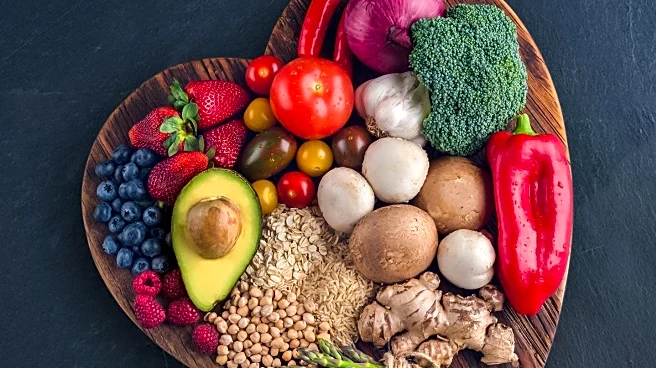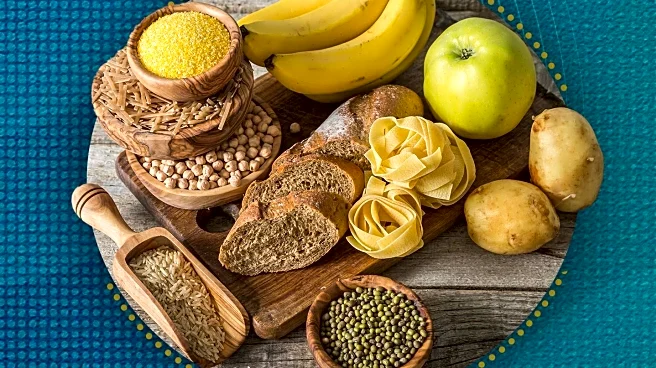What's Happening?
A recent analysis highlights several fruits that surpass apples in fiber content, offering significant health benefits. While apples are known for their fiber content, providing about 4 grams per medium-sized apple, other fruits such as passion fruit, raspberries, and guava offer even higher fiber levels. Passion fruit tops the list with 24.5 grams of fiber per cup, followed by raspberries with nearly 10 grams per cup, and guava with 9 grams per cup. These fruits provide both soluble and insoluble fiber, which are essential for heart health, gut health, and reducing cancer risk. Soluble fiber, found in fruits like oranges and apples, absorbs water to slow digestion and lower cholesterol, while insoluble fiber, found in fruit skins, aids in regularity and reduces colorectal cancer risk.
Why It's Important?
Increasing fiber intake is crucial for maintaining overall health, and these high-fiber fruits offer a delicious way to meet daily fiber recommendations, which range from 28 to 34 grams depending on age and gender. Consuming a variety of fiber-rich fruits can support heart health by lowering cholesterol levels and improving blood pressure. Additionally, fiber aids in digestive health by promoting regular bowel movements and reducing the risk of colorectal cancer. The inclusion of these fruits in the diet can also contribute to weight management and provide essential nutrients, making them a valuable addition to a balanced diet.
What's Next?
As awareness of the health benefits of fiber grows, consumers may increasingly seek out these high-fiber fruits, potentially influencing market demand and availability. Nutritionists and dietitians might recommend these fruits more frequently as part of dietary plans aimed at improving heart and gut health. The food industry could respond by developing new products that incorporate these fruits, catering to health-conscious consumers. Additionally, further research into the specific health benefits of these fruits could lead to more targeted dietary recommendations.
Beyond the Headlines
The emphasis on high-fiber fruits highlights a broader trend towards plant-based diets and the growing interest in functional foods that offer specific health benefits. This shift could have long-term implications for agricultural practices, food production, and public health policies. As consumers become more informed about the nutritional value of different fruits, there may be increased advocacy for better labeling and education around fiber content and its health impacts.











